
Strong alone, unbeatable together: die Markenkuppler is on a mission to bring brands together
Achieving a win-win partnership with expertise, efficiency and a pinch of pixie dust
By Sibylle Dorndorf
Anne-Kathrin Berlinecke has a secret formula for her passion for partnerships: openness, commitment, curiosity and a pinch of pixie dust. At least, that’s what the founder – and managing director – of die Markenkuppler attributes to her success. Brand collaborations have been her passion for more than 18 years. Twelve years ago, this crystallised into an exciting idea for a business: die Markenkuppler, a consulting firm specialising in brand collaborations and licensing partnerships. Its mission is to create the perfect match – with ease, speed, focus and a real impact.
Interview
Ms Berlinecke, creating the perfect match could sound like a tagline for Tinder or Parship. Who comes to you and what are they looking for?

Anne-Kathrin Berlinecke: I think I can best answer that with a specific example. Imagine your brief is to introduce the airline Condor to new target groups. The brand is typically regarded as family-focused and you need to give it a more youthful feel so that it gets noticed by singles, couples and friend groups. All with some wit and humour. How would you go about this? Well, you would consider what those travellers want from a holiday: to escape the routine, meet people, let their hair down. And romance is an important element of this, without necessarily having to meet “the one”.
Is this something you’ve worked on yourself?
Anne-Kathrin Berlinecke: This has been one of our most successful matches. Our customer Condor came to us specifically with this brief in mind. We didn’t need long to consider who would be the right fit. We looked at Amorelie’s product offering and put together an exclusive Hot Summer set with elements of both brands. The starter package consisting of an airport liquid bag, beach towel, lubricant and vibrator was prepared for lift-off – inspired by the campaign claim: ready to soar to new thrills.

So, you applied the idea of soaring high in a literal way...
Anne-Kathrin Berlinecke: Exactly. The holiday airline and the sex toy brand both epitomise the passion for exploring new things, creating fantastic memories and having an adventure – experiences that are truly there to be enjoyed with this collaboration.
Have you maybe a more “grounded” example?
Anne-Kathrin Berlinecke: Definitely, we’re well represented in all industries. We were approached by FlixBus and Spotify. Both companies had the shared goal of creating an easy-to-use offering that would help them to acquire new customers at a local level. We came up with a classic no-brainer, a simple, self-explanatory collaboration: the FlixBus Playlister allows passengers to enjoy music for free while they travel. The onboard WiFi ensures there are no dropouts. And the service users can tailor the individual playlist to their mood. This combines reach, visibility, target group and awareness. And it is still a successful partnership to this day.
What form do licensing partnerships take?
Anne-Kathrin Berlinecke: With licensing, a brand’s popularity and profile are leveraged for another product. The intention behind this is to use emotion to position and enhance the products, companies or brands and thereby increase sales.
Is licensing more of an exception in your portfolio?
Anne-Kathrin Berlinecke: Not at all. We actually get quite a lot of requests for licensing because of our general collaboration expertise. The advantage of licensing partnerships is that the agreements are very clearly defined and governed by contracts. As an industry insider, we have a good understanding of which brands could benefit from using licensing to open up additional markets, increase their profile or improve their image.
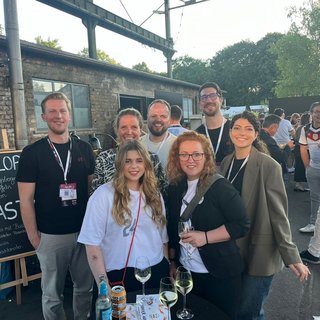
Anne-Kathrin Berlinecke: I can put that in one word: essential. Meeting up with old acquaintances, getting the industry news and connecting with new people and brands are crucial to our own development and that of other brands.
We even go a step further than that – in addition to participating in major events, we organise our own, more intimate, networking meetups to help bring together parties interested in collaboration. Essentially, we’re really excited to get people talking to each other.
These kinds of platforms not only deliver fresh momentum and food for thought but also lay the foundations for creative ideas. At the same time, we are there to share our knowledge and provide content that gives the potential partners practical guidance and added value.
Can you tell us about a specific perfect match in the area of licensing?
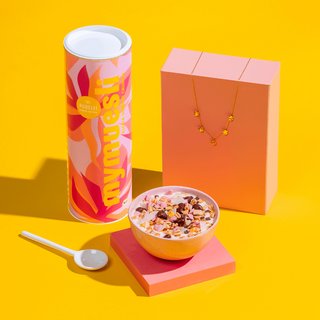
Anne-Kathrin Berlinecke: This isn’t an example from the toy industry, but the collaboration between mymuesli and Purelei is an excellent model of a successful brand partnership. Both brands combined pleasure and lifestyle – mymuesli developed a limited muesli variety tailored to the Purelei aesthetic and target market. The muesli was offered in exclusive packaging inspired by Purelei that included high-quality design elements and decorative motifs with a Hawaiian flair. There were also promos with jewellery vouchers and small accessories from Purelei were offered as free gifts, which created added value for customers.
What made this in particular such a good collaboration?
Anne-Kathrin Berlinecke: The fact that it was built upon three key pillars: a shared target market, cross-promotion and additional emotional value. Both brands appeal to modern, trend-conscious women who appreciate aesthetics and quality. Purelei benefited from mymuesli’s broad customer base with an interest in mindful eating, while mymuesli was able to reach customers keen on lifestyle and fashion through Purelei. The collaboration married pleasure with style, sparking enthusiasm among customers and creating a positive emotional connection with the brands. The partnership between mymuesli and Purelei shows how brands in different industries can perfectly complement each other if they have similar values and target markets and use that to create unique product worlds and an inspiring shopping experience.
Generally speaking, there’s a tendency for players in the toy sector to stick within their own networks, which may perhaps be counterproductive?
Anne-Kathrin Berlinecke: That’s right. Brand exclusivity can be problematic in the area of licensing. Think about it – if brands only cooperate within their own sector, they may fail to appeal to a new target market or fully exploit the potential for cross-selling and reaching new target groups. Let me give you an example: when a toy brand cooperates with another toy manufacturer, both already mainly appeal to children and parents, so the market influence remains limited. But that’s not all – by always collaborating within its own industry, a brand may become pigeonholed, so to speak, and not demonstrate its identity outside of its regular context. However, when a company like Lego successfully expands its licensing partnerships to incorporate the world of entertainment, a stronger emotional connection is formed. Essentially, collaborations with brands in other industries open the door to new product ideas and creative approaches that might not otherwise emerge by staying within the confines of the toy world. The Barbie/Airbnb collaboration, for example, resulted in a real-life Barbie Dreamhouse experience that went far beyond the conventional product.
It may not even occur to many companies to think creatively about licences. How bold can or should they be here?
Anne-Kathrin Berlinecke: Let’s look again at the example I gave for the previous question. The Barbie/Airbnb collaboration truly caused a stir because it took the Barbie brand out of its usual product environment and turned it into a real-world immersive experience. It’s an incredible example of how brand collaborations can result in creative synergies that go far beyond what a brand would have achieved on its own.
Airbnb and Barbie created a lookalike Barbie Dreamhouse that could be booked via the Airbnb platform. The Malibu villa was styled in the typical Barbie colours and had design details taken directly from Barbie’s world. In addition to overnighting in Barbie’s house, guests could also enjoy typical Barbie activities, such as styling sessions, yoga lessons and cooking classes in the pink kitchen. This experiential factor made the collaboration more than just a marketing gimmick – it created an emotional connection with the brand. The promotion went viral: it was not only widely shared on social media but also featured in conventional media, such as TV, magazines and blogs. It achieved enormous reach and positioned Barbie as a modern, creative brand that is pop-culturally relevant. Barbie was no longer perceived as “solely” a toy, but also a brand for adults keen to embrace fashion, design or nostalgia.
Times are hard. Are companies more open to some kind of collaboration right now?
Anne-Kathrin Berlinecke: It’s not so much about being generally open to partnerships, but more about how companies can achieve their objectives with smaller budgets. Their focus is often turned inwards: what can I do, what can you do? Once they recognise that they can achieve more when they partner up rather than plough their own furrow, efficient collaborations become an important opportunity, especially in challenging times.
And you can help these companies to find and pair up with the right partner...?
Anne-Kathrin Berlinecke: Yes. We start by thoroughly analysing where the companies stand. Their values have to match and there has to be good chemistry. Then we bring both sides together and host an initial discussion. We explore there the specific possibilities of a collaboration, whether the timing is right and what both sides would expect from the partnership.
Who takes part in those meetings?
Anne-Kathrin Berlinecke: Management, marketing and sales representatives, often the agency as well and on occasion also someone from the legal department who can draw up any resulting contracts.
Is this all kept confidential?
Anne-Kathrin Berlinecke: It must be kept confidential. We have both parties sign a non-disclosure agreement beforehand. It’s a no-go without that.
Then what happens next?
Anne-Kathrin Berlinecke: If everything has gone well, a product selection is drawn up and a timeframe for the launch is agreed, along with a marketing concept designed to support each party and a guideline as to what will be communicated where and how. Usually a memorandum of understanding is also then passed on to the respective legal departments. A precise operational timeline is agreed as well.
What if the parties have a falling out over something?
Anne-Kathrin Berlinecke: Thankfully that doesn’t happen often, but when it does it’s our job to look at things from an external perspective and assess whether the collaboration is inherently at risk or the contentious issue can be ironed out.
You’ve been bringing brands together for twelve years already. Has this involved a great deal of persuasion?
Anne-Kathrin Berlinecke: Let’s put it this way: there are always companies willing to take risks and try new things. So the business has gone pretty smoothly from the outset, but we have had to push open doors to highlight the potential and the multitude of options. Over the past five or six years or so, companies have come to see collaborations as genuine opportunities.
So they can be bold. For example with speed networking. How does that work?
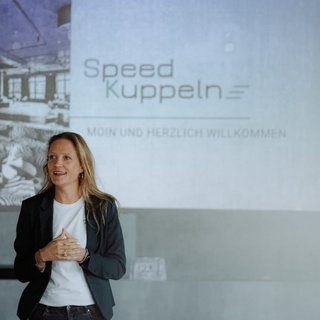
Anne-Kathrin Berlinecke: Exactly like speed dating. It’s very simple: they meet in person with lots of other marketing decision-makers, have a discussion and identify the best partner for their next collaboration in an easy and efficient way. We analyse and prepare the entire format in advance and ensure it meets the respective needs.
Presumably, you need to do solid groundwork to make sure the matching is as efficient as possible?
Anne-Kathrin Berlinecke: Of course. In speed networking, the potential partners should be perfect matches, so once a company signs up, we undertake a strategic pre-screening process based on its profile, business objectives and what we’ve learned about it from our own introductory discussions. After that, we prepare optimally in advance of the event so that the “dates” are as efficient and useful as possible. The participants receive an individual briefing document for each potential partner, with their profile, insights about them and ideas for how they might collaborate. We also explain the key strategic and operational guidelines for ensuring the best possible brand alliance.
Generally speaking, how many potential partners would a company meet at such an event?
Anne-Kathrin Berlinecke: On the day of the event, each participant can expect to hold ten face-to-face discussions, each lasting 25 minutes, for which we will have prepared content. And they have the opportunity to connect with at least 40 other interlocutors between the “dates”.
What happens when there’s a match?
Anne-Kathrin Berlinecke: Then we move on to the next stage. We don’t simply leave the potential partners to their own devices after an event, of course. They can count on our know-how and further inspiration. After all, we’re experienced matchmakers – we know the kind of support companies generally need for everything to go swimmingly.
Are there companies that are more open to this approach?
Anne-Kathrin Berlinecke: Essentially, those that are very small, start-ups and big enterprises. Mid-sized companies often struggle with this idea – businesses of that size always want to do their own thing first. It’s a shame, really, because they then miss a lot of opportunities.
Who would you like to invite to engage in speed networking?
Anne-Kathrin Berlinecke: We’d love to invite Fjällräven and show them all of the possibilities.
Sounds like you already have some specific ideas...?
Anne-Kathrin Berlinecke: Literally tonnes! This brand is a true source of inspiration – it offers limitless opportunities and would be a good fit for businesses in all kinds of different industries. We would be able to unleash the full potential of a collaboration, with a whole lot of pixie dust added.
Ms Berlinecke, thank you for the insights into your soaring escapades in the brand world.
die Markenkuppler has been an expert in innovative brand collaborations since 2012. It is passionate about bringing companies together to create synergies, strengthen brands and celebrate new achievements in partnership. All aspects of its work – its individual consulting and support services, its speed networking events and its COOVAL collaboration platform – are guided by the motto: increased awareness powered by collaboration.
About the author:
Sibylle Dorndorf has been covering the toy industry for almost 30 years. Most recently, the journalist was editor-in-chief of the TOYS family of magazines at publisher Göller Verlag in Baden-Baden, Germany. Her passion: companies that reinvent themselves, brands that credibly position themselves, people who have something to say and products with a future.


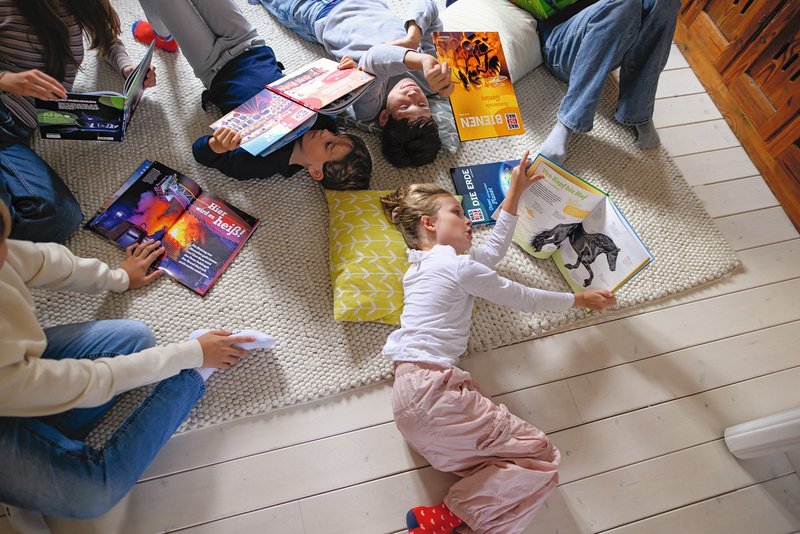
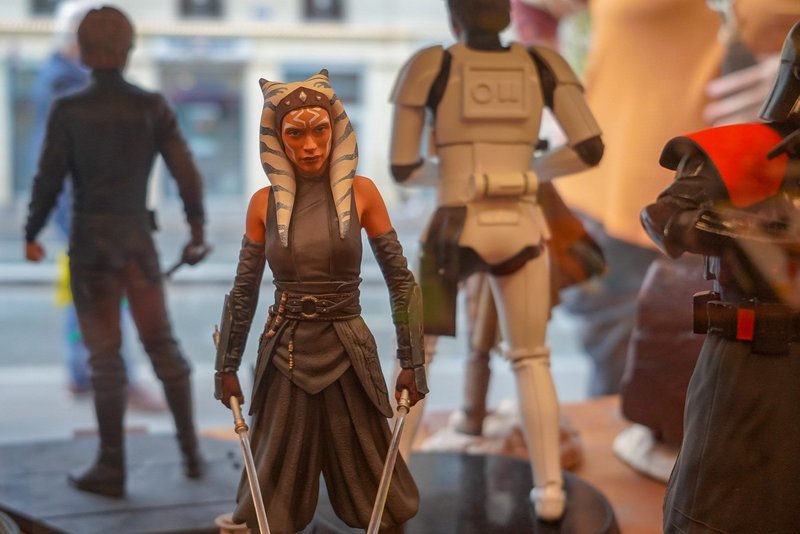
![[Translate to Englisch:] [Translate to Englisch:]](/fileadmin/_processed_/4/b/csm_20240227_Teaser_fd95b8f94a.jpg)